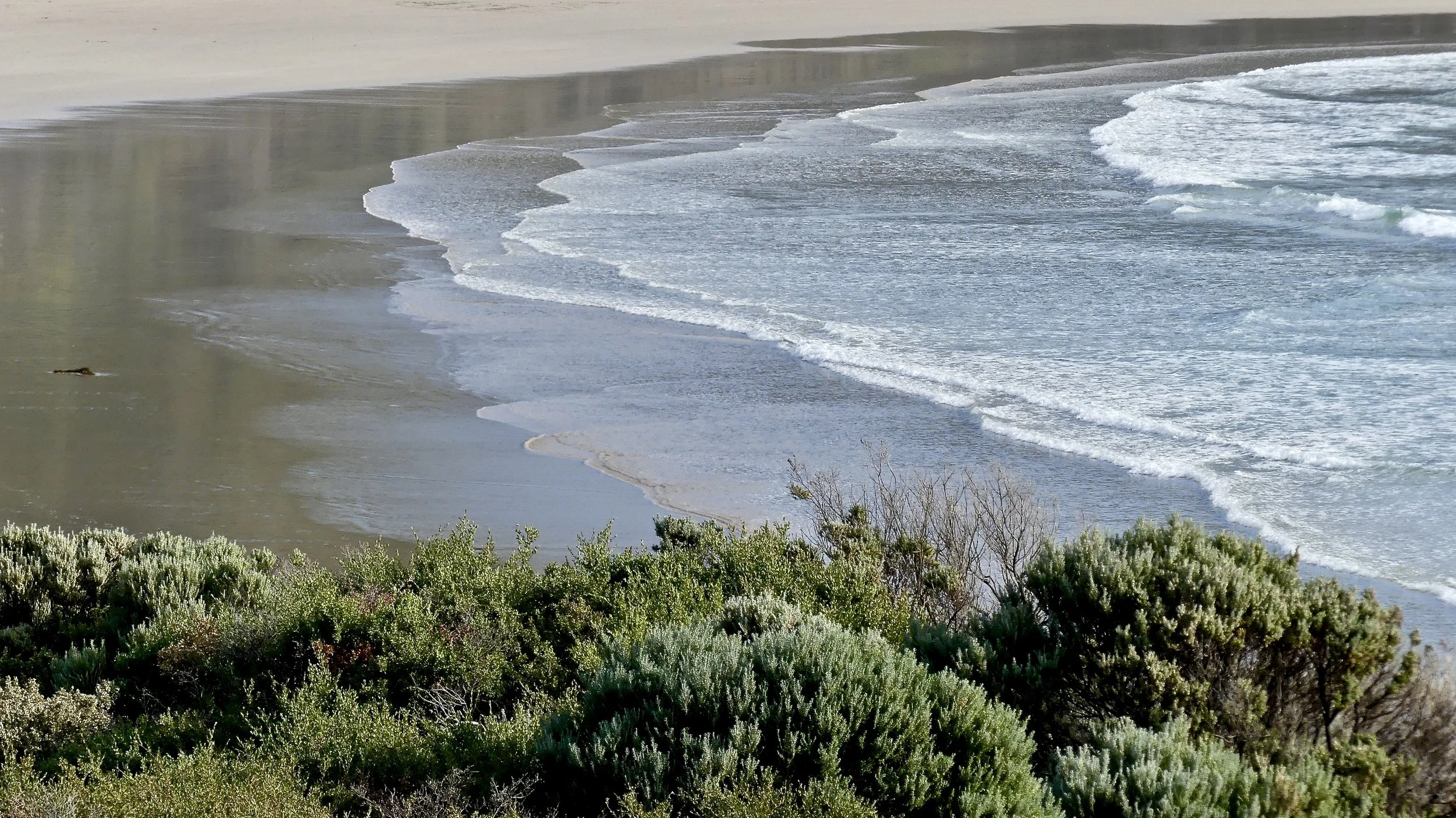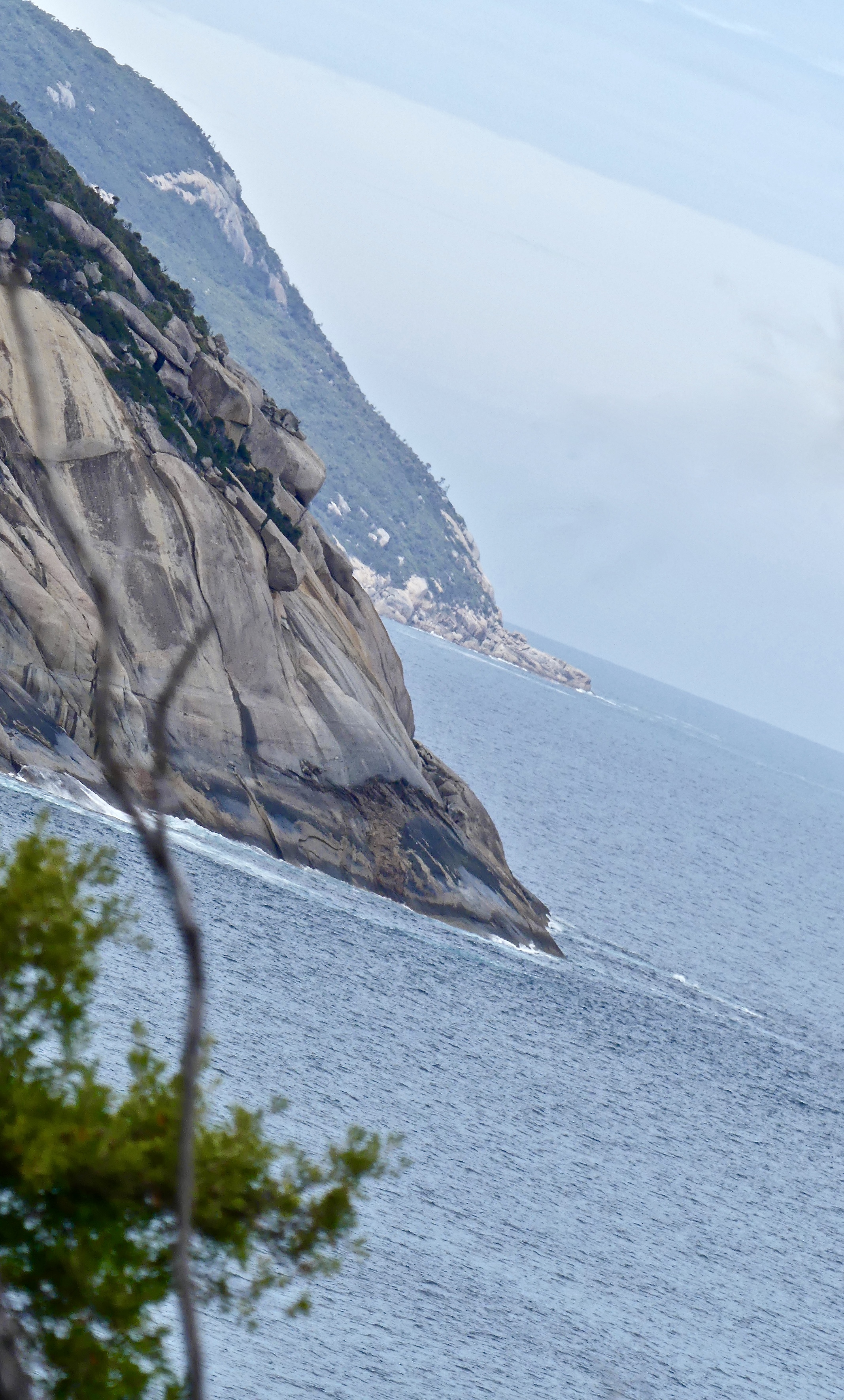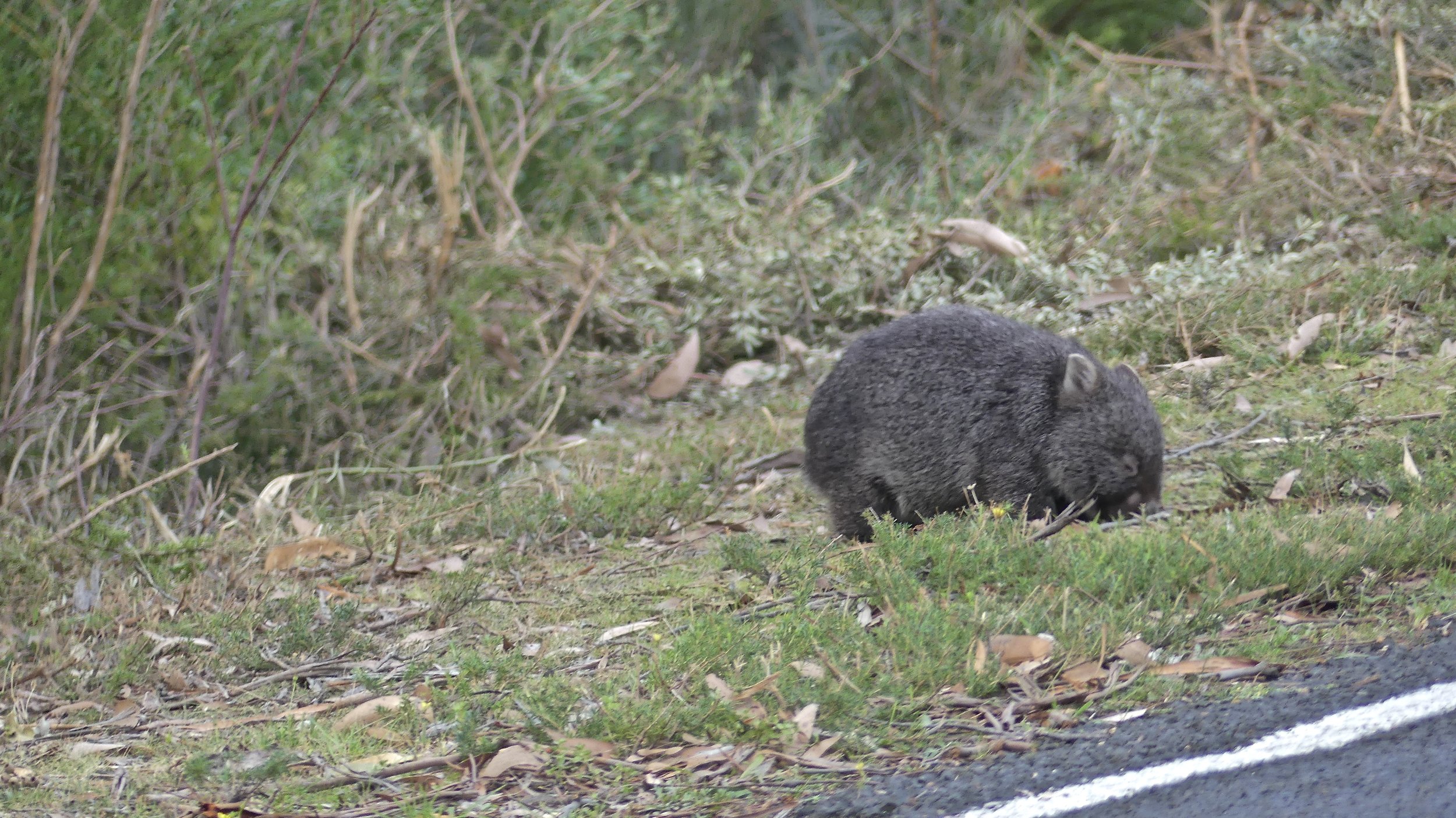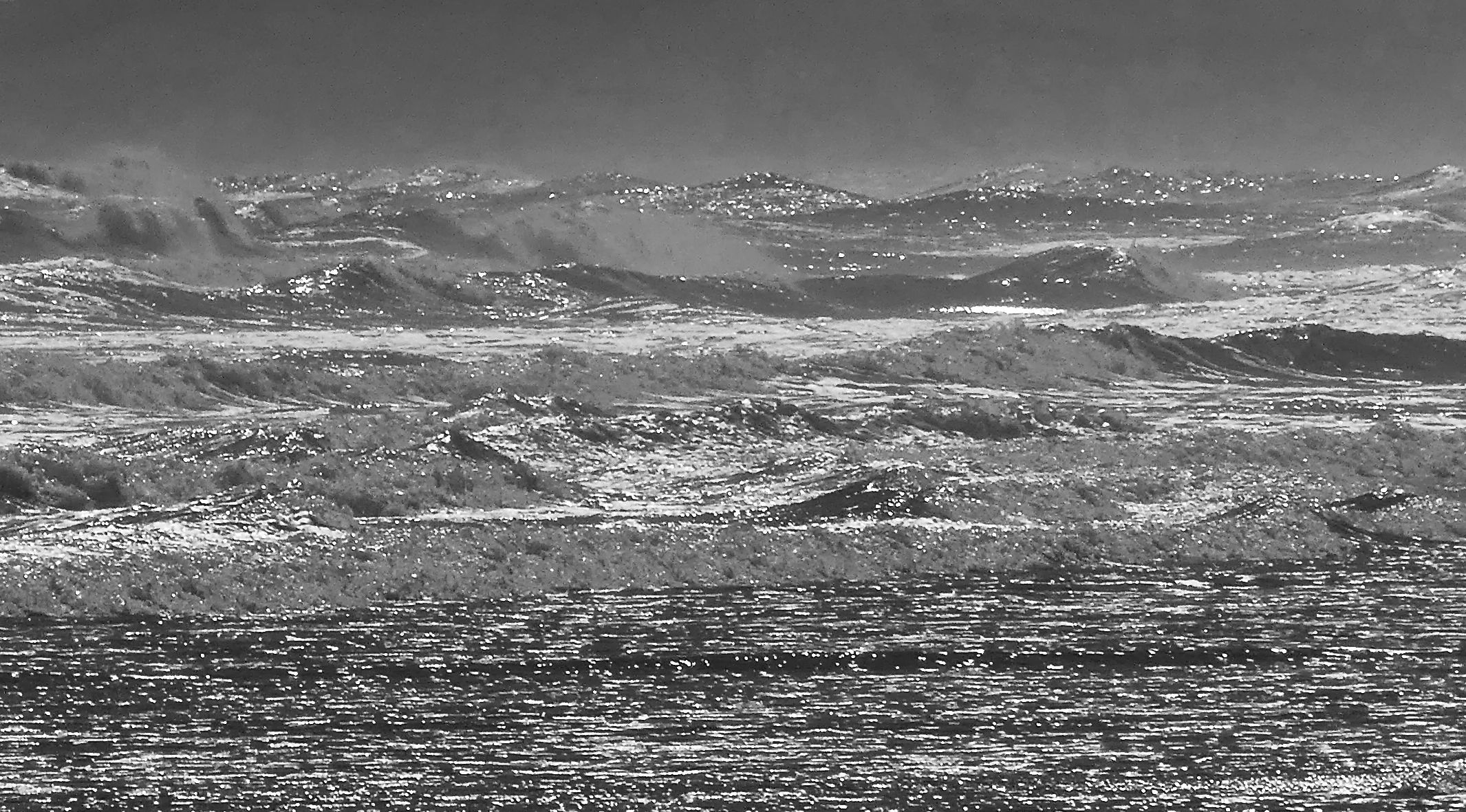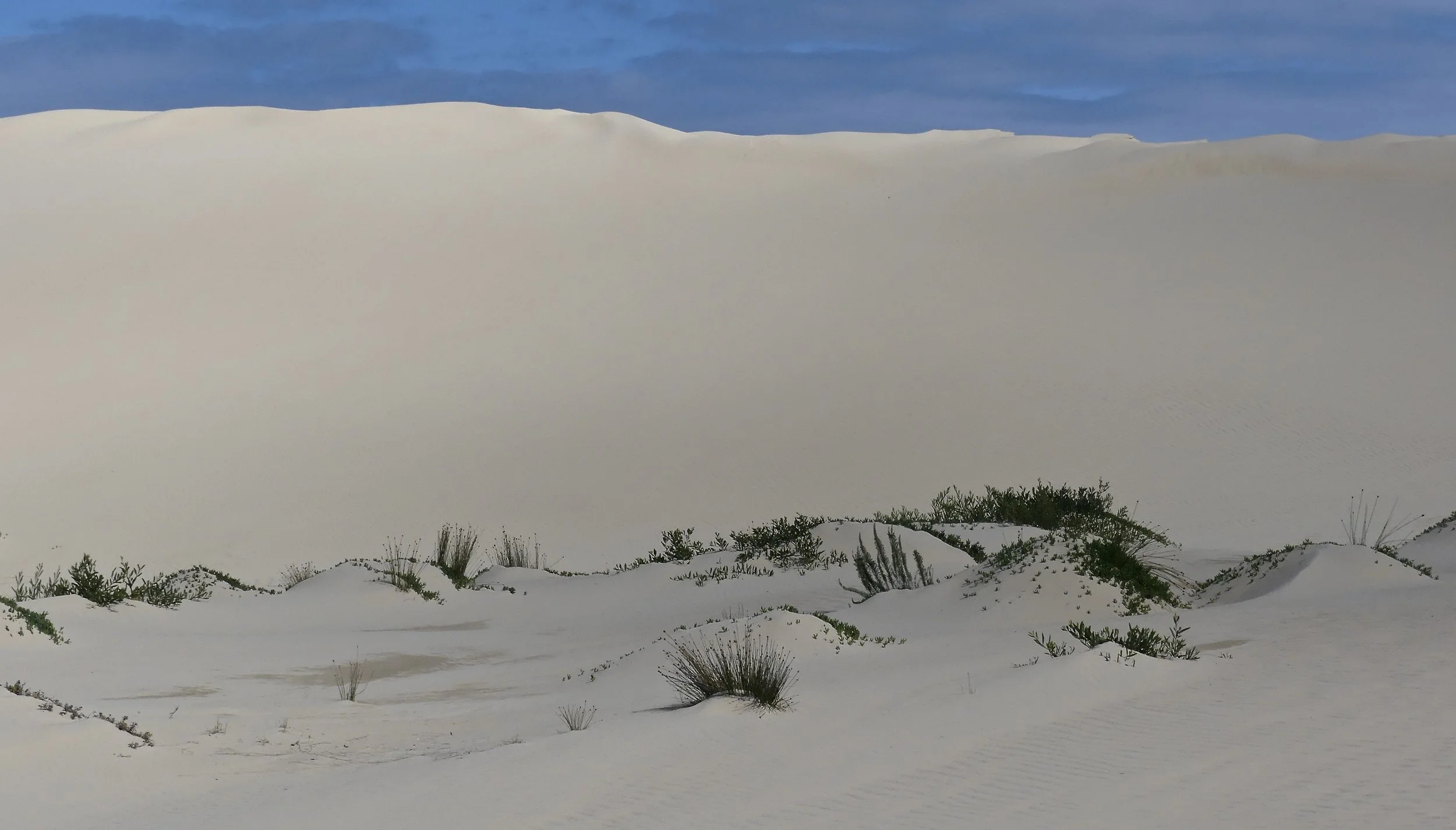Three beaches
It was difficult to decide what to do on day 3 of our Wilsons Prom trip: so many walks to choose from; so few days. I fancied Tongue Point from Darby Saddle, with its offshoot to Sparkes Lookout. Another way of reaching Tongue Point is by walking from the Darby River car park, where we stopped on the way so I could reflect on the River and a valley view that reminded me of something similar on the road to Lake Pedder in Tasmania's western wilderness.
Looking to the Vereker Range
In the end, the coast for which Wilsons Prom is renowned won the day. We modified 'Three Bays Walk' so as to avoid revisiting Tidal River. We parked at Picnic Bay, walked north to Whisky Bay, then south, along Picnic, over the headland to Squeaky Beach, and almost to the end of Pillar Point.
We walked across Picnic Point to Whisky Beach, looking out to Norman Island, with its strangely beautiful appendage, whose rock surface is typical of the weathering of granite by exfoliation.
Whisky Creek's approach to the sea was even lovelier than ours, the bulrushes particularly. At either end of Whisky Bay and beyond, precariously balancing rocks seemed to be the thing. Some birds were taking early siestas.
There was a gnarled old banksia overhanging the path down to Picnic beach. And what at first I thought was attractive dune vegetation I now discover is yet another invasive weed – Sea Spurge – that outcompetes native plants and doesn't help resident native animals either.
Invader, right: Sea Spurge
From the southern end of Picnic, you cross Leonard Point through coastal scrub – impenetrable in places – with pleasing coastal vistas. Twisted entangled undergrowth always reminds me of early explorers who faced getting horse-drawn carts and herds of animals through impassable vegetation such as this.
Sentinels, below: Pacific Gull and Sooty Oystercatcher
Squeaky Beach is a popular destination, being a short drive or walk from Tidal River. There are red lichened rocks and fine sand. We headed immediately to the much less crowded southern end where there's an extensive Wilsons Promontory Granite platform, on which we sat, ate a picnic lunch and tried to capture crashing waves.
There were yet more granite seascapes on the way to Pillar Point, at the end of which sits an enormous boulder. Unfortunately, a gaggle of selfie-addicts prevented me from taking the view south to Tidal River, but looking north from atop the boulder was somewhat easier if you waited for a moment of sole occupancy.
Inevitably, there was a cautionary tale from this day on Wilsons Prom. Along Victoria's coast, relatively wild and wonderful sandy stretches are chosen by Hooded Plovers to raise their cuter-than-buttons babies. (We saw them in northwest Tassie, too.) The birds forage for invertebrates along the water's edge and lay their eggs in barely-there scrapes on the sand. At the slightest noise disturbance, they abandon the nest and any babies scatter.
On many beaches and tracks on the Prom there were signs warning tourists to leave the birds well alone, and areas known to have nests were roped off. Thankfully, dogs are not allowed in the National Park, but mindlessly wandering visitors are an even worse threat. People love to sit or lie in the lower dunes at the top of the beach, areas the Plovers are most likely to choose. They are difficult to spot, so you need to walk with care and monitor exploring children.
Plovers don't like their beaches choked with Sea Spurge either.
Their conservation status is Vulnerable, but numbers are decreasing. I would close beaches temporarily while they are breeding. There are lots of other beaches for humans to enjoy. In far southwestern Victoria, Warrnambool Racing Club train their horses along the fine long beaches of Belfast Coastal Reserve, another favourite breeding ground for Hooded Plovers. It's hard to believe there aren't many other places for racehorses to gallop. Where to they go when the tide's in?
On our way back to the cabin, we spotted our one and only wombat of the trip, crossing the road. Fortunately we were travelling at least 10-20 kilometres short of the speed limit. I was disconcerted. Are we doing enough to protect our wildlife, even in national parks?

